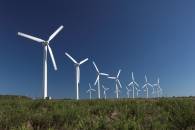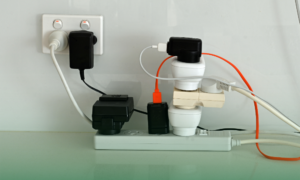The U.S. Energy Policy Institute says anti-wind farm campaigners have failed miserably in their legal efforts due in part to poorly constructed opinions being used in the absence of real evidence.
The Institute studied the outcome of 49 legal challenges the around the world relating to wind farms and health effects and found only one case where wind turbines exceeded standard industry noise levels.
Authored by wind policy expert Mike Barnard, the report derides the “inexpert expertise” and misinformation utilised by anti-wind activists and identifies 16 individuals who claim to be wind energy experts, but who actually “have overstated the relevance of their credentials, as well as the depth and breadth of their expertise. These individuals lacked expertise and substantial evidence as detailed by courts around the world.”
“Additionally, these non-experts often introduce hundreds of pages of what they term evidence, but the vast majority of the documents are poorly constructed opinion pieces by other non-experts,” Barnard said.
The report assesses legal cases in five countries pertaining to wind energy and highlights the weaknesses of evidence and expertise that are common in health-related suits against wind farms.
Detailed examination of court proceedings against wind farms in Canada, New Zealand, the USA, the United Kingdom, and Australia, along with a study of anti-wind groups such as Australia’s Waubra Foundation and U.S. National Wind Watch, found that since 1998, 49 hearings have been held under rules of legal evidence, with 48 finding no potential harm to human health.
Canada’s powerful anti-wind lobby has brought 17 separate cases against wind farms for its 7.8 GW of wind energy capacity, the highest number of all nations studied. In all cases Canadian courts found wind farms would not and do not cause health impacts with proper setbacks in place. Australia is second on the list, with 10 cases over its 2.7 GW of capacity and a population of 23 million. No health impacts were found in these cases and were dismissed.
According to Barnard, court challenges jumped dramatically in 2002 after U.S. citizen Nina Pierpont, a paediatrician and wife of an anti-wind farm activist, self-published a book entitled “Wind Turbine Syndrome”, after interviewing 23 people by phone and accepting hearsay evidence from 15 others.
In Australia, former GP and CEO of the Waubra Foundation Sarah Laurie has come under fire for intentionally spreading unfounded health fears in communities near wind farms through the “nocebo effect” – the belief that a thing is harmful because a trusted source tells you so. This psychogenic hypothesis, according to the report, is a dominant factor in wind farm “infrasound” complaints.
With nearly 320,000MW of installed wind capacity globally, the report concludes municipalities and levels of government have little to fear from legal challenges mounted by so-called wind experts connected to anti-wind groups.
“In civil cases, judges have typically awarded costs to the defending organizations, so while court cases are time consuming, organizations will typically not find them costly otherwise. The courts have spoken. Wind farms do not cause health problems.”
Source














































